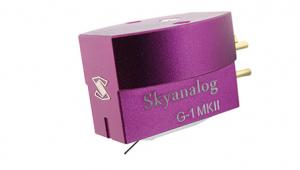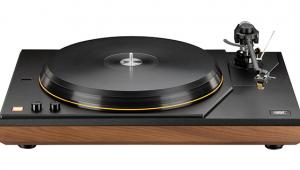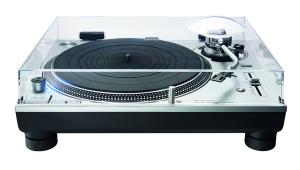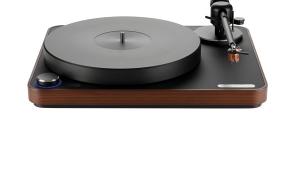Sme Model 30/12 Turntable & Arm (£22,500)
It was as inevitable as Rocky 2. As soon as SME issued the Model 20/12 turntable in 2006, enthusiasts wondered, would it be joined by a 30/12? Shortly before he passed away that same year, Alastair Robertson-Aikman revealed that it was definitely happening. And almost two years to the day after the funeral, his son Cameron announced the Model 30/12.
Its name was a given. But in addition to converting a ’30/2 to ’30/12 status, AR-A had voiced another concern. While the techniques used to widen the ’20 could be applied to a Model 30 with the necessary up-scaling [see box-out], there was still the issue of the arm. Although few had qualms about the 12in version of the detachable-headshell 312, Alastair knew that, despite the merit of said 312S, a Model 30/12 needed a proper 12in Series V, with a single-piece, cast magnesium tube.
Given that the main point of extending any turntable to take a 12in arm is to provide access to a longer arm’s promise of lower tracking error, it follows that the new arm is the more important element. The Series V-12 had to do more than feature a fixed headshell to silence one sort of obsessive: it had to keep its mass down and its rigidity high, over a greater span than the standard Series V, so as not to negate the lower tracking error with another set of concerns.
Improvements in the 12in over the 9in versions of the Series V include gold print and MCS 150 pure silver internal wiring as standard, a higher contact load on the bearings and the provision of three extra tungsten weights to allow for cartridges of between 5.0g and 32.0g, and for coping with the slightly greater mass (its effective mass is still only 11.5–12.5g). According to SME’s maths, the Series V-12’s reduction in tracking error is ‘27.23 percent better than the 9in arm for both angular error and distortion’, for a maximum tracking error of 0.009º/mm of armtube length.
As with the Model 20/12, the 30/12 is available with or without arm (the former has an ‘A’ suffix), while the arm board is reversible to accept 9in arms if desired. As the new arm sells for £2878 plus VAT, those who desire a 30/12 and who already own a decent 9in or 12in arm might wish to purchase a Series V-12 at a later date. (Hey, three grand is three grand!)
UP AND RUNNING-IN
You’ll need a substantial table for the 30/12, with weight of 53.5kg with its outboard power supply and a footprint of 530x400mm; I used a Solid Steel table from Italy. Unpacking needs two people: in its wooden crate, the 30/12 tips the scales at 79.5kg. Once assembled, SME recommends a running-in period, so I left it rotating for 48 hours before getting down to serious listening. I also had a 20/12 and 30/2 handy for comparisons.
Set-up will be familiar to anyone who has assembled a Model 20, 20/12 or 30/2, the owner’s manual leaving nothing to chance, and the construction, fit and finish worthy of the Swiss at their best. With the aid of a fellow SME user, we had it operating in under an hour. I used it with both Air-Tight PC1 and Koetsu Urushi moving-coils, feeding the Audio Research PH5 phono stage, Trilogy 909 preamp and 990 power amp, and assorted speakers including LS3/5As, Acoustic Energy AE1 Mk III SE and Sonus Faber Guarneri. Wire was Yter throughout the system.
Tinkerers, take note: thanks to the reversible arm-board, one can easily isolate the arm performance gains from the differences between the changes in the decks’ dimensions and mass: just put 9in Series Vs on both a 30/2 and a 30/12. But deciding which is ‘better’ is tricky. I found with the 20/12 that there’s no clear-cut result because some people are more susceptible to tracking error than bass extension, stability or isolation anomalies, and vice versa.
For me, the potential of lower tracking error seemed more tempting, because the ‘short wheelbase’ Model 30 is so good down below that I couldn’t ask for more. But then I heard the 30/12 in my own room.
WAKE UP CALL
CR-A had already treated me to a few hours with the pre-production Model 30/12 in the SME Music Room. What it did for the mass and space of Wakey Wakey!!! – The Billy Cotton Show (C5 Records) was revelatory, enough to make even a sceptical (but open-minded) CR-A remark that it was the most impressive demo LP he’d ever heard: open, wide and deep, and – above all – as life-like as audio ever gets. Considering that his initial exposure to it came via the Model 30/12, I hope he never has to hear it on a lesser deck. Which, as I learned, means most of the rest.
Back in Kent, the first album to grace the SME was Sundazed’s sublime transfer of Santana’s eponymous debut. The panning drums on ‘Evil Ways’, which did so much to display the dispersion prowess of the AE1s, revealed something I never expected to experience: more perfectly rounded, deeper bass than even a 30/2 extracts from the grooves.
As rich and potent as an Amarone, as room-filling and smoothly flowing as real percussion, the Santana rhythm section served up ample evidence that – regardless of the arm’s extra length – the added heft of the 30/12 plinth, the revised suspension and the new power supply, were combining to produce a system unaffected by its environment: no smearing, no unwanted resonances, no thudding.
But then, as if this bassy intro was setting the stage, the guitar work and the assorted Latin percussion provided enough treble activity and transient attack to assure the listener that this confident portrayal wasn’t restricted to only a part of the frequency spectrum. By the time the all-vocals emerged, sounding as warm and natural as one would expect of a device conceived by an opera lover, it was abundantly clear that the Model 30/12 was an upgrade in all areas – not just the anticipated by-products of either a longer arm and heavier plinth.
In order to test its raison d’être, one has to audition outer- and inner-groove passages that would betray tracking error at its worst. As I am not obsessed with parallel tracking arms nor convinced that the best 9in arms leave much to be desired, I was hard-pressed to find passages that benefited greatly from an extra three inches. We are not, after all, talking about all-beef American hot-dogs, bespoke fountain pens or cigars.
THE SOUND OF SEVERAL HANDS CLAPPING
Sitting down with as many ‘delicate’ albums as I could, both mono and stereo, it came down to a sensation, an impression, rather than anything I could pinpoint. That is, until I listened to applause, the simple, naked, perfectly-recorded applause of the aforementioned Billy Cotton Show. The applause never approaches Rice Krispies artificiality even via an inferior playback system; it transcends the equipment. But the SME did what it should: it reproduced the sonic nature of the applause with peerless consistency, regardless of where it appeared physically on the disc.
Turning to more quantifiable sounds – voices and instruments – I used Simon & Garfunkel’s Bridge Over Troubled Water, delicate harmonies from the Hi-Los and piano sessions from Earl ‘Fatha’ Hines. There is nothing to report, simply because there was nothing amiss.
Obviously, the only way to detect if tracking error is present would be to fit the 30/12 with a parallel-tracking arm and compare it to a 30/12 with the Series V-12. However, one might presume that it would prove fruitless, so silky, smooth and neutral were the sounds at the LPs’ extremes. But then, a perfectly set-up 9in Series V is so error-free as to be invisible. We are indeed picking nits, and I am unable to determine whether it’s the longer arm, the heftier plinth or the combination of the two that renders this deck so authoritative.
OBJECT OF DESIRE
After a week with the Model 30/12, with a brace of superlative cartridges, over 150 hours of running in, and 30 or 40 LPs, I realised that I would never need to listen to another record deck. Only the task of reviewing would ensure a flow of turntables through my room. I’m not saying that it’s the best on the planet – I’m not that glib. But I do know when something is right for me: perfectly fitting shoes, a wine at the right age, or a pen with an ideal ink flow.
Why do I find this combination so desirable? With its dedicated arm, the Model 30/12A possesses a majesty I hadn’t heard before, in either my own listening room, or at SME. ‘Majesty’ is the only word that conveys the combination of authority and scale – the dictionary defining it as ‘regal, lofty, or stately dignity; imposing; grandeur’. I don’t wish to get all spooky and mystical, but I swear one can sense AR-A’s hand in this turntable/arm combination. If ever the notion of a ‘swan song’ was imparted with all of its musical connotations, then this is Alastair’s perfect epitaph.
VERDICT
£80k turntables no longer raise eyebrows, so a £23k deck that rates as a high-end default is somehow life-affirming. Bereft of absurd, self-aggrandising over-complexity, exhibiting nothing but sane engineering and producing sound that’s impossible to fault, the SME Model 30/12 is, in today’s context, a bargain. As my 30/2 has not even hiccup’d in 19 years, the 30/12 can be seen as an investment too.
Originally published in the March 2009

























































